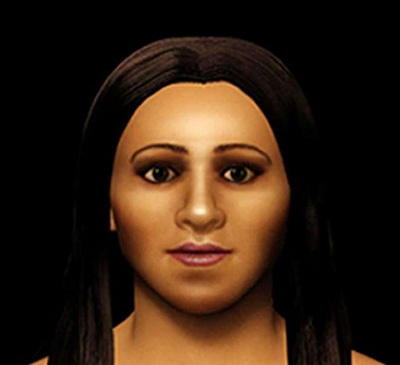Did Cleopatra Have African Ancestry?
| Tweet |
|
Cleopatra (69 BC - 30 BC) was the last Pharaoh of Ancient Egypt. She is perhaps best remembered for her looks and her personality, as well as her liaisons with both Julius Caesar and Mark Anthony. Although Cleopatra was the Queen of the Nile and the ruler of Egypt, she was, in fact, the last of a long line of Hellenistic (Greek) rulers from Macedonia.
Cleopatra was a member of the Ptolemaic dynasty and the language of the Ptolemaic Pharaohs was Greek, not Egyptian. Thus, it was generally accepted that Cleopatra had Greek ancestry.
A new archaeological study, however, is raising questions about the ancestry of Cleopatra’s family. Apparently, Cleopatra had a younger sister named Princess Arsinöe who vied with Cleopatra for control of the Egyptian throne. Ancient Roman texts suggest that Princess Arsinöe was banished to the city of Ephesus after losing a power struggle with her older sister.
Ephesus was a Greek port city not far from Macedonia on the coast of what is now modern Turkey. In Cleopatra’s time, Ephesus was ruled by the Romans. Cleopatra is thought to have ordered the Roman general Mark Anthony (who was then her husband) to murder her sister, whom she feared as a rival for the Egyptian throne.
An archeological team headed by Hilke Thür of the Austrian Academy of Sciences believes that a tomb in Ephesus contains the remains of Princess Arsinöe. The tomb, which had unusual characteristics, was originally opened and explored in 1926. However, its significance to the Egyptian royal family was not discovered until recently.
Measurements of the skull taken from the tomb in the 1920s were combined with modern technology to create a computerized reconstruction of the face of the young woman who was buried in the tomb. The young woman is thought to be Princess Arsinöe and the computerized reconstruction showed that she had the physical characteristics of a mixture of white European, black African and ancient Egyptian (see image below).

According to Hilke Thür, this mixed heritage provides “a real sensation which leads to a new insight on Cleopatra’s family and the relationship of Cleopatra and Arsinöe”. Obviously, this raises the interesting question as to whether Cleopatra had African ancestry as well.
The story of the discovery of Princess Arsinöe’s tomb and the subsequent research linking the tomb to Cleopatra is the subject of a BBC television documentary entitled “Cleopatra: Portrait of a Killer”, which you can view below.
Some Interesting Genealogy Facts about Cleopatra
• The Ptolemaic dynasty of Ancient Egypt owes its existence to Alexander the Great, who conquered Egypt in 332 BC (some 300 years before Cleopatra’s time). Alexander the Great had a general named Ptolemy I, who ruled Egypt after Alexander’s death. Ptolemy I was the founder of the Ptolemaic dynasty.
• In the Ptolemaic dynasty, the male children were always called Ptolemy and the female children were all called Cleopatra, Berenice or Arsinöe.
• Cleopatra’s mother was Cleopatra V and her father was Ptolemy XII (Cleopatra had an older sister also called Cleopatra, thus making the famous Cleopatra that we know as Cleopatra VII).
• Cleopatra’s mother and father were thought to be biological brother and sister.
• There was a huge amount of inbreeding in the Ptolemaic dynasty. Inbreeding was seen as a way to keep power within the family. For example, Cleopatra had only six (out of a possible 16) great-great grandparents.
• Cleopatra had four children in total: a son by Julius Caesar (who was 30 years her senior) and three children by her husband Mark Anthony. She also attempted to produce children by her two brothers but was unsuccessful.
• When the future Roman Emperor Augustus reconquered Egypt, Mark Anthony and Cleopatra both committed suicide. Augustus was the grand-nephew of Julius Caesar. He feared Cleopatra’s son because he was Julius Caesar’s only living heir. Augustus had Cleopatra’s son executed with the famous words “Two Caesars is one too many”.
• The month of July is named after Julius Caesar and the month of August is named after Augustus (see the related article Understanding Julian Calendars and Gregorian Calendars in Genealogy).
You May Also Like:
DNA Confirms Remains of Russian Royal Family

